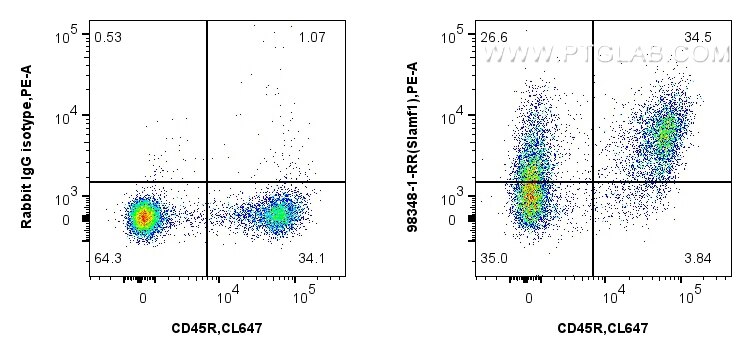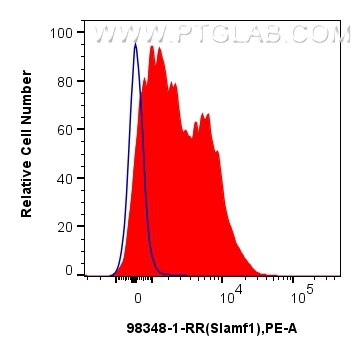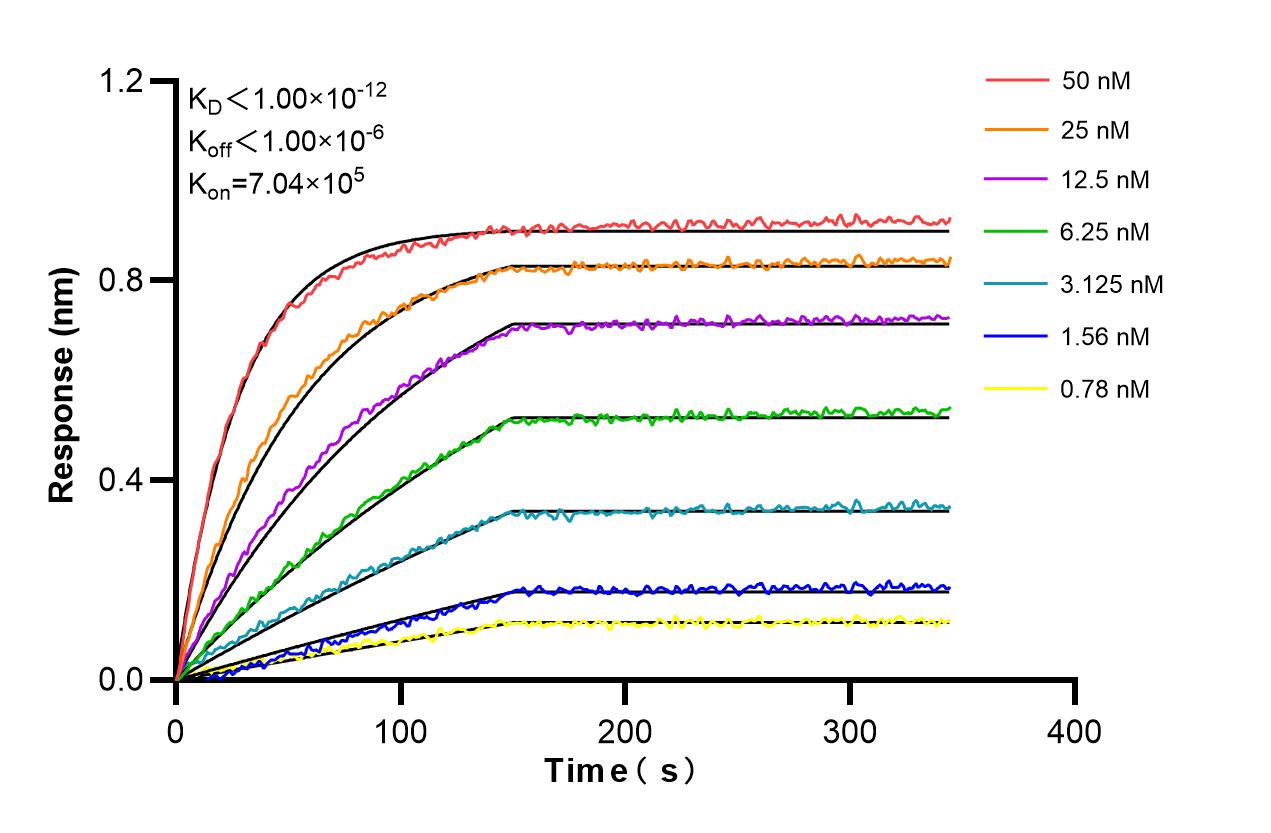Validation Data Gallery
Tested Applications
Recommended dilution
| Application | Dilution |
|---|---|
| This reagent has been tested for flow cytometric analysis. It is recommended that this reagent should be titrated in each testing system to obtain optimal results. | |
Product Information
98348-1-PBS targets SLAM/CD150 in FC applications and shows reactivity with mouse samples.
| Tested Reactivity | mouse |
| Host / Isotype | Rabbit / IgG |
| Class | Recombinant |
| Type | Antibody |
| Immunogen |
CatNo: Eg2787 Product name: Recombinant Mouse SLAM/CD150 protein (rFc Tag) (HPLC verified) Source: mammalian cells-derived, V37 Tag: C-rFc Domain: 25-242 aa of NM_013730.4 Sequence: TGGGVMDCPVILQKLGQDTWLPLTNEHQINKSVNKSVRILVTMATSPGSKSNKKIVSFDLSKGSYPDHLEDGYHFQSKNLSLKILGNRRESEGWYLVSVEENVSVQQFCKQLKLYEQVSPPEIKVLNKTQENENGTCSLLLACTVKKGDHVTYSWSDEAGTHLLSRANRSHLLHITLSNQHQDSIYNCTASNPVSSISRTFNLSSQACKQESSSESSP 相同性解析による交差性が予測される生物種 |
| Full Name | signaling lymphocytic activation molecule family member 1 |
| Calculated molecular weight | 38 kDa |
| GenBank accession number | NM_013730.4 |
| Gene Symbol | Slamf1 |
| Gene ID (NCBI) | 27218 |
| Conjugate | Unconjugated |
| Form | |
| Form | Liquid |
| Purification Method | Protein A purification |
| UNIPROT ID | Q9QUM4-1 |
| Storage Buffer | PBS only{{ptg:BufferTemp}}7.3 |
| Storage Conditions | Store at -80°C. |
Background Information
Signaling lymphocytic activation molecule (SLAM, also known as SLAMF1 or CD150) is a 70-95 kDa transmembrane glycoprotein that belongs to the immunoglobulin gene superfamily. SLAM is constitutively expressed on peripheral blood memory T-cells, T-cell clones, immature thymocytes and a proportion of B-cells, and is rapidly induced on naive T-cells after activation. SLAM is involved in T cell stimulation and cytokine production, and may play an important role in the regulation of immune responses to pathogens.



